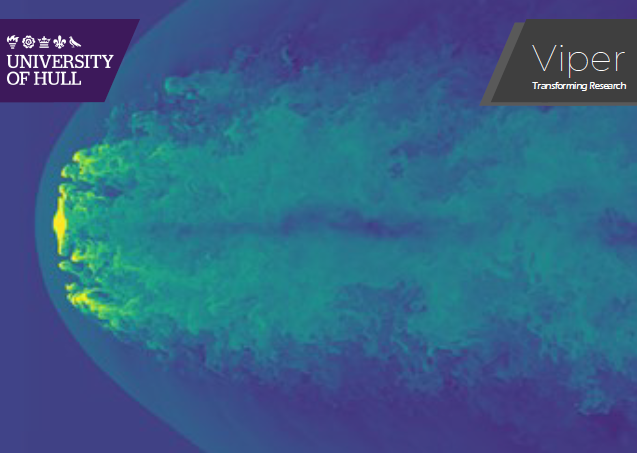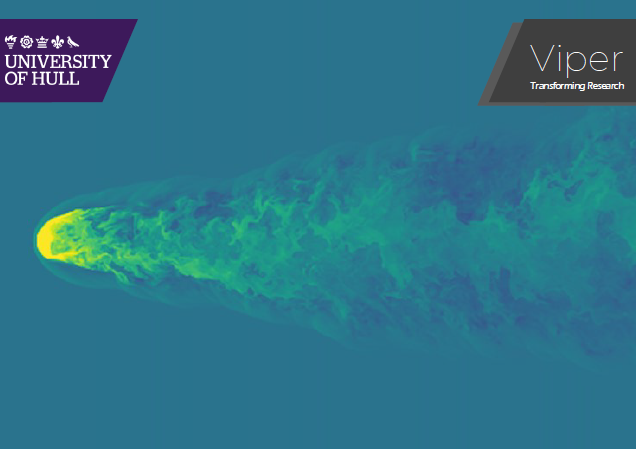E.A. Milne Centre for Astrophysics


Galaxy clusters not only contain thousands of galaxies, but also contain a very large amount of hot, intracluster gas which fills the space between the galaxies. As galaxies fall into clusters at thousands of kilometres per second, they experience a headwind from this hot gas. If the pressure is large enough, gas can be pushed out of the galaxy itself, creating long tails of gas trailing behind the galaxy.
Understanding this process is important for understanding galaxy evolution in general as gas is the fuel for star formation. If a large fraction of this gas is stripped, the galaxy can no longer form stars and will eventually turn red and fade. The impact of this gas stripping can also change the morphology of galaxies.
Using Viper, our aim was to reproduce the unusual tail of the D100 galaxy in the Coma cluster. Hydrodynamical simulations (those that model gas a fluid) mimic a galaxy falling into a cluster by modelling a galaxy in a wind tunnel and exposing it to a wind which grows stronger over time. The tails we see from these simulations however, are usually flared and diffuse. D100 has a very narrow tail composed of dense, cold gas, which is suitable for hosting star formation.
Using purely hydrodynamical simulations, we attempt to recreate this tail in a simulation and compare the results with available observations. We ran three simulations, varying the initial gas distribution in the disk and the increase of the ram pressure felt by the galaxy over time. The images above show the galaxy after a billion years of evolution (top) and 900 million years (bottom) of evolution, experiencing a ram pressure due to a wind which increases as the galaxy moves further towards the centre of the cluster. After another 500 million years the resulting gas tail was relatively straight and narrow, which looks much closer to that observed compared to previous simulations These simulations were extremely computationally expensive, using around 30 days each on 64 nodes, totaling around 1.3 million core hours per simulation. This large amount of computing time allowed use to capture the stripping of the galaxy gas in high resolution and confirm its turbulent nature.

